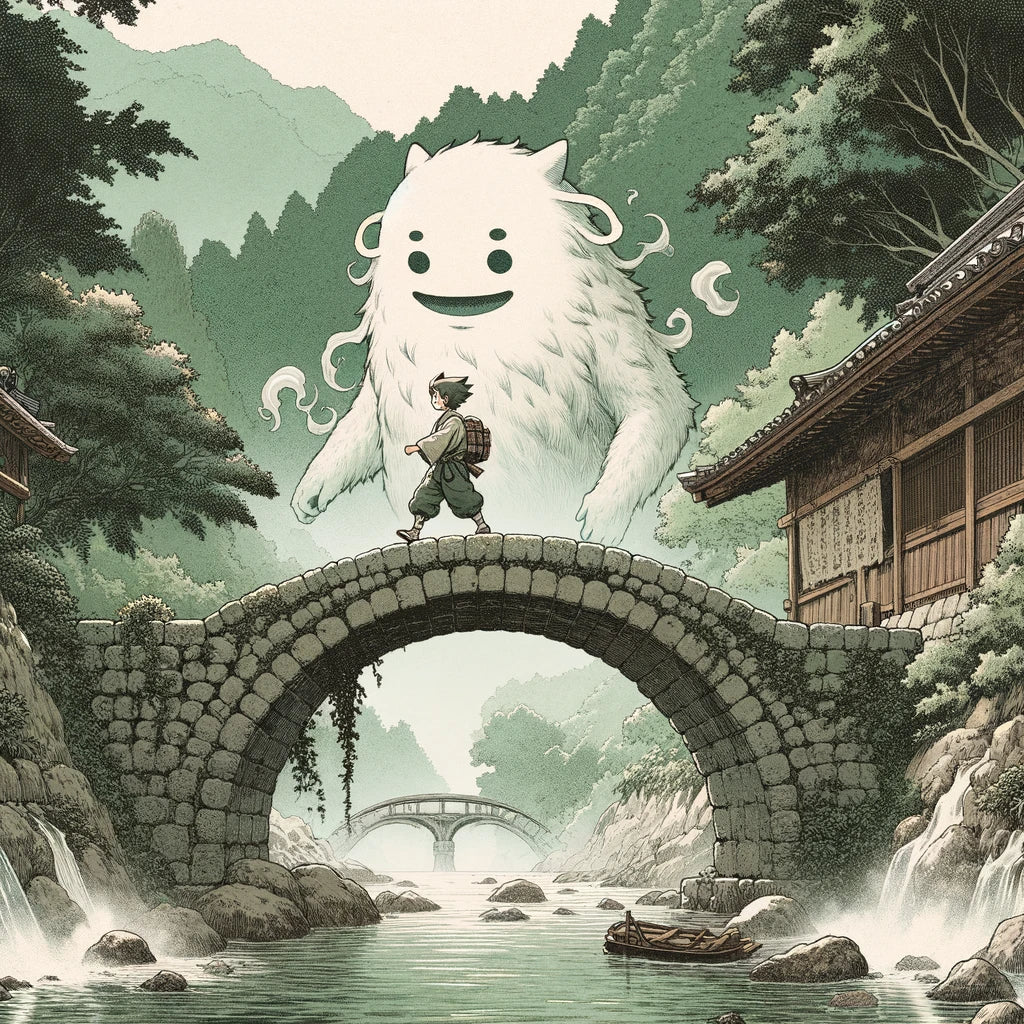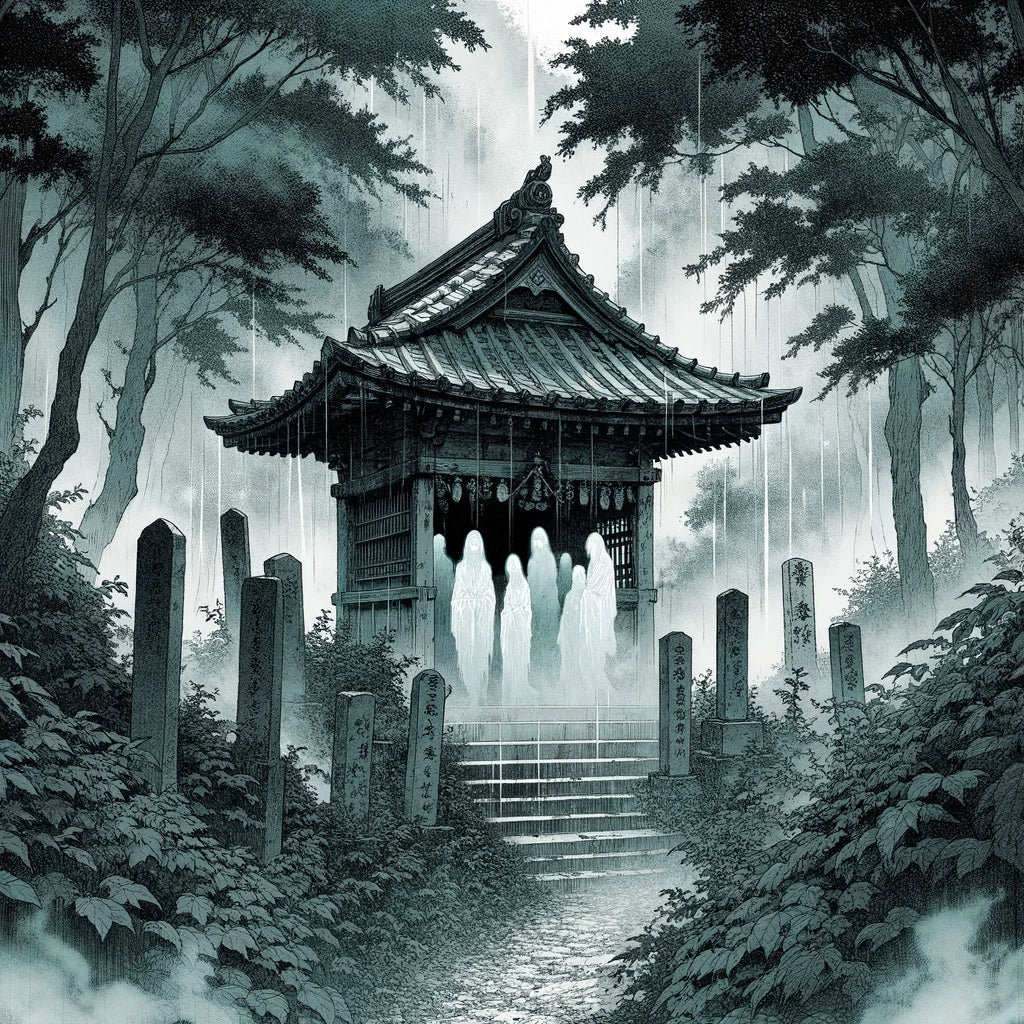The rich tapestry of Japanese folklore is interwoven with many threads, one of the most captivating being the myriad spirits known as yokai. These creatures, ranging from malevolent monsters to mischievous sprites, have permeated Japanese culture for centuries. Today, they continue to influence modern anime, offering a unique blend of traditional lore and contemporary storytelling.
Origins of Yokai
Yokai have been a central part of Japanese folklore since at least the 8th century, as evidenced by their mention in ancient texts such as the "Nihon Shoki" and the "Kojiki". These texts describe supernatural beings often thought to be responsible for unexplained phenomena—mysterious sounds, inexplicable occurrences, or unforeseen misfortunes. Over the centuries, yokai evolved from esoteric mythological figures to popular subjects in Edo-period art and literature. A pivotal work in their evolution was Toriyama Sekien’s "Gazu Hyakki Yagyō", a compendium of illustrated monsters published in the late 1700s. This collection not only catalogued hundreds of spirits but also standardised many of their appearances, which had previously varied widely across different regions and stories.
As the portrayal of yokai expanded during the Edo period, these creatures began to be seen less as mere sources of fear and more as complex beings with their own narratives and roles within the natural order. Their growing popularity was reflected in various forms of cultural output, including ukiyo-e (woodblock prints), literature, and performance art, making them an integral part of Japan's artistic heritage.
Role in Japanese Culture
In Japanese culture, yokai are not merely additives to tales of fantasy; they are vital components of the narrative fabric that demonstrates the interplay between the natural and supernatural realms. Their stories, often imbued with moral lessons, reflect the ethics of balance and respect for both nature and the spiritual realm. This is evident in the way yokai are woven into the folklore of different regions, each portraying unique traits and teachings relevant to the local culture and environment.
Many regional stories and festivals continue to celebrate these entities, emphasising their enduring cultural significance. For instance, the famous Hyakki Yagyō (Night Parade of One Hundred Demons) festivals variously celebrated across Japan not only perpetuate the stories of yokai but also teach lessons about coexisting with the unseen world. These festivals, along with numerous local myths involving yokai, play a crucial role in fostering community identity and continuity of cultural heritage.
Furthermore, yokai also find their place in religious practices. Many shrines and temples are dedicated to specific yokai, where they are venerated similarly to other deities. These sites often become pilgrimage spots, where devotees come to seek blessings, make offerings, or appease the spirits to prevent misfortune. The integration of yokai into religious practice highlights their profound impact on both the spiritual landscape and the daily lives of the Japanese people.
As educators of societal values and historical lessons, yokai are featured prominently in Japanese education, particularly in subjects dealing with traditional literature and cultural studies. They are used to engage students with cultural narratives that reinforce values such as respect for nature, understanding of the unseen forces that shape our world, and the importance of harmony in communal living.
In essence, yokai are a fundamental element of Japan’s cultural and spiritual life, bridging the past and present through continuous evolution and enduring relevance in society. Their ability to adapt and remain significant in contemporary culture underscores their deep roots and the Japanese people's respect for tradition intertwined with modernity.
Historical Timelines and Haunts
Yokai stories are omnipresent across Japan, but certain regions are particularly noted for their connections to specific spirits. For example, the Tottori Prefecture is famous for its Sand Museum, which often features yokai-related exhibits. Key periods for the evolution of yokai in popular culture include the Edo period (1603-1868), when many classic yokai stories were formalised, and the post-war era of the 20th century, which saw a resurgence in folklore interest.

Societal Influence of Yokai
Yokai influence Japanese culture in myriad ways, from the spiritual practices of Shinto priests to the urban legends of contemporary Tokyo. For many, yokai represent a connection to the past, a way to engage with traditional Japanese values. They also serve as educational tools, through which children learn about ethics and the consequences of their actions in a uniquely Japanese context.
Yokai Elements in Home Decor
Integrating yokai into home decor is a delightful nod to Japanese culture, infusing a space with both mystical and historical significance. Many enthusiasts opt for yokai art prints, sculptures, and themed tatami mats, each adding a touch of the ethereal to everyday environments. These pieces range from traditional ink wash paintings to contemporary graphic illustrations, allowing a blend of old and new in interior design.
Yokai-themed omamori (charms) are also popular for those looking to bring protection and good luck into their homes. Traditionally believed to offer protection, these charms reflect the idea that even fearsome spirits can be benevolent guardians. For a more immersive effect, some choose statement pieces like yokai-inspired lighting fixtures, which cast playful shadows and create an atmosphere filled with whimsy and lore.
Incorporating yokai into home decor not only beautifies the space but serves as a cultural homage, keeping the rich stories and lessons of these spirits alive in a uniquely personal way. Whether through small decorative elements or larger installations, yokai-themed decor celebrates the enduring appeal and timeless fascination of Japanese folklore.
Yokai's Presence in Anime
In contemporary anime, yokai often appear as key characters or underlying themes. Series like "Natsume's Book of Friends" and "Mononoke" not only use yokai for their dramatic and aesthetic qualities but also delve deep into their folklore roots to explore issues of isolation, identity, and coexistence. The interaction between humans and yokai in these stories provides a rich ground for discussing modern societal challenges while staying connected to traditional Japanese themes.
By blending the ethereal with the everyday, yokai-themed anime encourages viewers to reflect on the unseen forces that shape their lives, making ancient folklore relevant to a global 21st-century audience.

Legacy and Relevance
The fascinating world of yokai offers a unique window into the heart of Japanese culture, past and present. From ancient texts to the latest anime series, these spirits continue to captivate and inspire, bridging the gap between the old and the new. As they adapt and evolve, yokai remain a key element of Japanese folklore, ensuring their stories—and lessons—resonate far beyond their mythical origins.
As yokai continue to evolve and adapt, they serve as a testament to the fluidity and dynamism of folklore. The way these spirits have transitioned from oral traditions to digital animations illustrates not just a change in medium, but also a shift in the cultural and social dialogue of Japan. Yokai today are not merely relics of the past; they are active participants in the narrative of modern Japan, embodying contemporary issues such as environmental concerns and social justice, all while retaining their roots in traditional lore.
Conclusion: The Everlasting Charm of Yokai
Yokai, with their enigmatic and eclectic nature, continue to be a vibrant and vital part of Japanese culture. As they weave through the fabric of modern media and participate in the global conversation, they bring with them centuries of folklore, art, and morality. Whether seen through the lens of history, culture, or contemporary relevance, yokai remind us of the power of storytelling and its ability to transcend time and geography, enriching our understanding of the world and ourselves. Their journey from ancient myths to pop culture icons is a journey into the heart of human creativity and imagination, proving that even the most fantastical creatures have a place in our collective consciousness.
Explore Our Collection
To further immerse yourself in the captivating world of anime and manga, we invite you to view our exclusive Anime and Manga Collection at Home Art Haven. Discover a curated selection of art that brings the magic of Japanese folklore right into your living space. Whether you're a dedicated enthusiast of Japanese culture or a newcomer eager to learn about the mystical tales of yokai, our collection caters to every taste and preference. Discover pieces that not only decorate but also tell stories, bringing the timeless allure of yokai into your own home or collection.
























